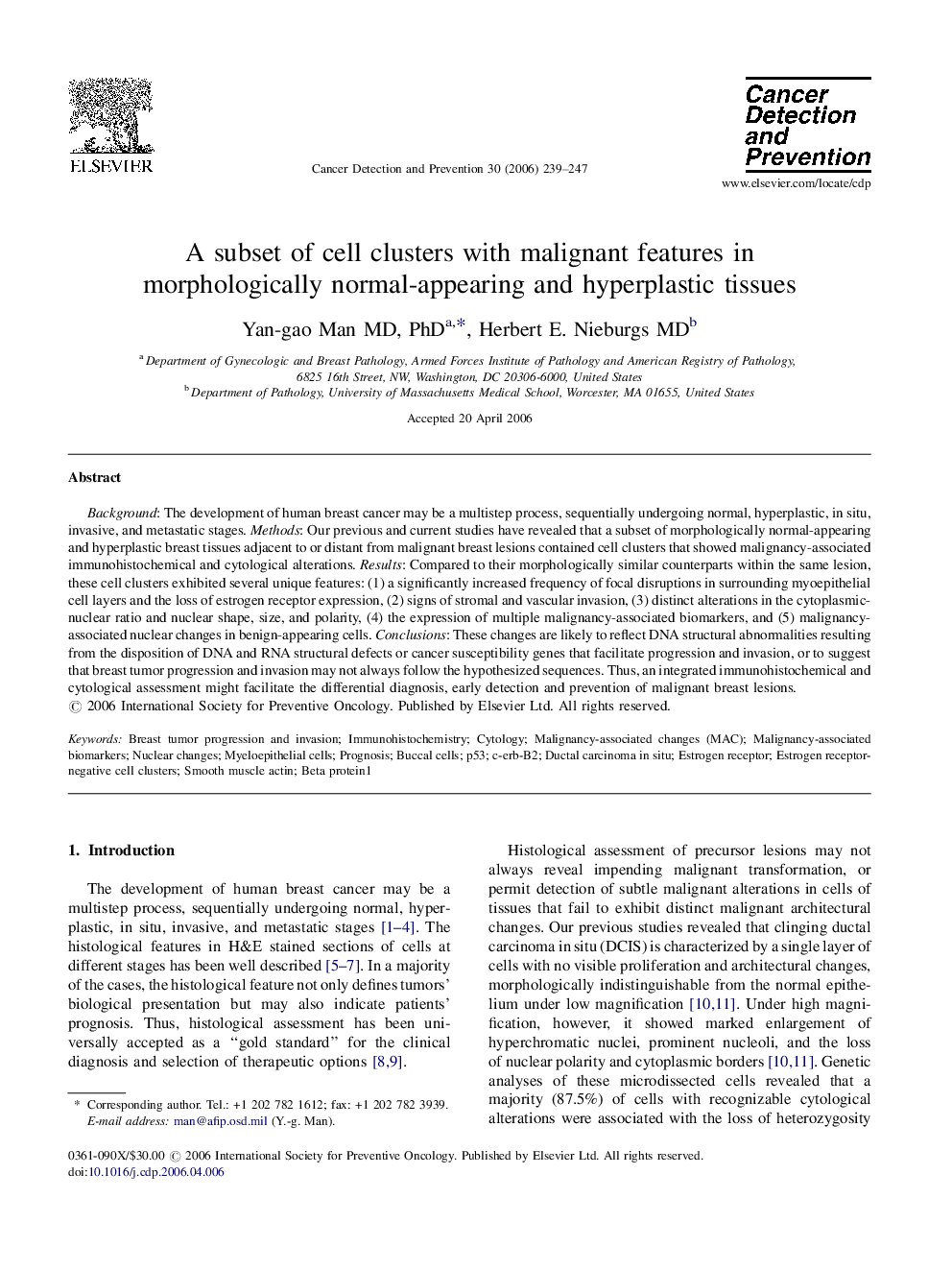| Article ID | Journal | Published Year | Pages | File Type |
|---|---|---|---|---|
| 2108751 | Cancer Detection and Prevention | 2006 | 9 Pages |
Abstract
Background: The development of human breast cancer may be a multistep process, sequentially undergoing normal, hyperplastic, in situ, invasive, and metastatic stages. Methods: Our previous and current studies have revealed that a subset of morphologically normal-appearing and hyperplastic breast tissues adjacent to or distant from malignant breast lesions contained cell clusters that showed malignancy-associated immunohistochemical and cytological alterations. Results: Compared to their morphologically similar counterparts within the same lesion, these cell clusters exhibited several unique features: (1) a significantly increased frequency of focal disruptions in surrounding myoepithelial cell layers and the loss of estrogen receptor expression, (2) signs of stromal and vascular invasion, (3) distinct alterations in the cytoplasmic-nuclear ratio and nuclear shape, size, and polarity, (4) the expression of multiple malignancy-associated biomarkers, and (5) malignancy-associated nuclear changes in benign-appearing cells. Conclusions: These changes are likely to reflect DNA structural abnormalities resulting from the disposition of DNA and RNA structural defects or cancer susceptibility genes that facilitate progression and invasion, or to suggest that breast tumor progression and invasion may not always follow the hypothesized sequences. Thus, an integrated immunohistochemical and cytological assessment might facilitate the differential diagnosis, early detection and prevention of malignant breast lesions.
Keywords
Related Topics
Life Sciences
Biochemistry, Genetics and Molecular Biology
Cancer Research
Authors
Yan-gao MD, PhD, Herbert E. MD,
